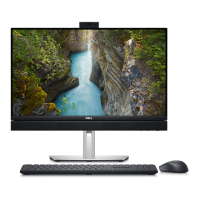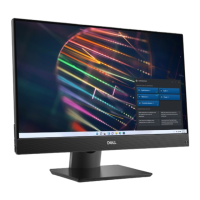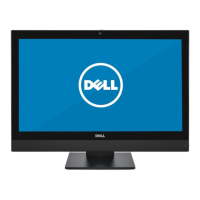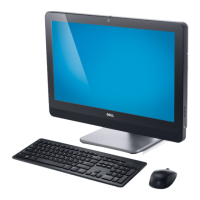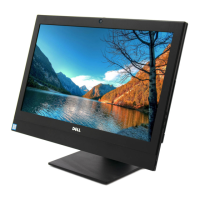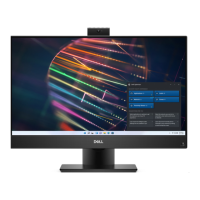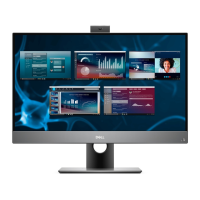How to fix LCD failure (SBIOS message) on Dell OptiPlex All-in-One Plus 7410 Desktop?
- CCynthia SmithSep 9, 2025
If your Dell Desktop's LCD is failing (SBIOS message), replace the LCD module.

How to fix LCD failure (SBIOS message) on Dell OptiPlex All-in-One Plus 7410 Desktop?
If your Dell Desktop's LCD is failing (SBIOS message), replace the LCD module.
What to do if LCD failure (EC detection of power rail failure) on Dell Desktop?
If your Dell Desktop's LCD is failing due to EC detection of power rail failure, replace the system board.
How to resolve PCI or Video card/chip failure on Dell Desktop?
If your Dell Desktop has a PCI or Video card/chip failure, replace the system board.
What to do if power rail failure occurs on Dell OptiPlex All-in-One Plus 7410?
If your Dell Desktop is experiencing a power rail failure, replace the system board.
| Operating System | Windows 11 Pro |
|---|---|
| Wireless | Wi-Fi 6E, Bluetooth 5.2 |
| Processor | 13th Gen Intel Core i5/i7/i9 |
| Display | 23.8-inch FHD (1920 x 1080) Anti-Glare |
| Memory | Up to 64GB |
| Storage | Up to 2TB PCIe NVMe SSD |
| Graphics | Intel UHD Graphics |
| Audio | Stereo speakers with Waves MaxxAudio Pro |
| Webcam | 5MP |
| Ports (Front) | USB-C, USB-A, headphone/microphone combo |
| Ports (Rear) | HDMI |
| Power Supply | 90W External Adapter |
Details ports and features on the right side of the computer.
Details ports and features on the left side of the computer.
Describes display elements like microphones, camera, and speakers.
Explains the location and operation of the retractable camera.
Lists and describes ports on the bottom of the computer.
Details various ports on the back of the computer.
Explains the purpose and location of the Service Tag.
Provides physical dimensions and weight specifications for the computer.
Lists processor types, speeds, and chipset details.
Lists the operating systems supported by the computer.
Details memory slots, configurations, and storage types like M.2 SSDs.
Lists and describes all external and internal connection ports.
Details Ethernet, Wireless, and Audio component specifications.
Lists display resolutions, touch options, and camera specifications.
Details power supply unit (PSU) ratings and connector types.
Explains eye comfort features and graphics processing units.
Lists security features and environmental compliance information.
Essential safety guidelines before performing internal work.
Details ESD risks and protective equipment like wrist straps.
Lists tools and steps for safe component handling and lifting.
Details screws used and identifies major computer components.
Steps to remove and install the computer stand.
Steps to remove and install the computer's back cover.
Steps for removing and installing memory modules.
Steps for removing and installing M.2 SSDs in slots 0 and 1.
Steps for removing and installing the coin-cell battery.
Steps for removing and installing the I/O and bottom covers.
Steps to remove and install the retractable camera assembly.
Steps for removing and installing the system fan and power supply unit.
Steps to remove and install the power supply fan.
Steps for removing and installing the I/O bracket and speakers.
Steps for removing and installing the heat sink and processor.
Steps to remove and install the system board.
Steps for handling the power-button/I/O board and audio board.
Steps to remove and install the display-assembly base.
Lists the operating systems supported by the computer.
Guidance on obtaining drivers and software updates.
Instructions on how to access the BIOS setup utility.
Details various configuration menus within BIOS setup.
Procedures for updating the system BIOS.
Instructions for setting, changing, or clearing BIOS passwords.
Overview of the pre-boot system performance check tool.
Lists diagnostic light patterns and their corresponding problem descriptions.
Steps for recovering the operating system using Dell tools.
Procedure for troubleshooting Wi-Fi issues via power cycling.
Information and links to Dell's self-help resources.
How to contact Dell for sales, technical support, or service issues.
